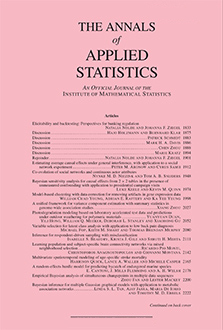Abstract
Heat waves merit careful study because they inflict severe economic and societal damage. We use an intuitive, informal working definition of a heat wave—a persistent event in the tail of the temperature distribution—to motivate an interpretable latent state extreme value model. A latent variable with dependence in time indicates membership in the heat wave state. The strength of the temporal dependence of the latent variable controls the frequency and persistence of heat waves. Within each heat wave, temperatures are modeled using extreme value distributions, with extremal dependence across time accomplished through an extreme value Markov model. One important virtue of interpretability is that model parameters directly translate into quantities of interest for risk management, so that questions like whether heat waves are becoming longer, more severe or more frequent are easily answered by querying an appropriate fitted model. We demonstrate the latent state model on two recent, calamitous, examples: the European heat wave of 2003 and the Russian heat wave of 2010.
Citation
Benjamin A. Shaby. Brian J. Reich. Daniel Cooley. Cari G. Kaufman. "A Markov-switching model for heat waves." Ann. Appl. Stat. 10 (1) 74 - 93, March 2016. https://doi.org/10.1214/15-AOAS873
Information





